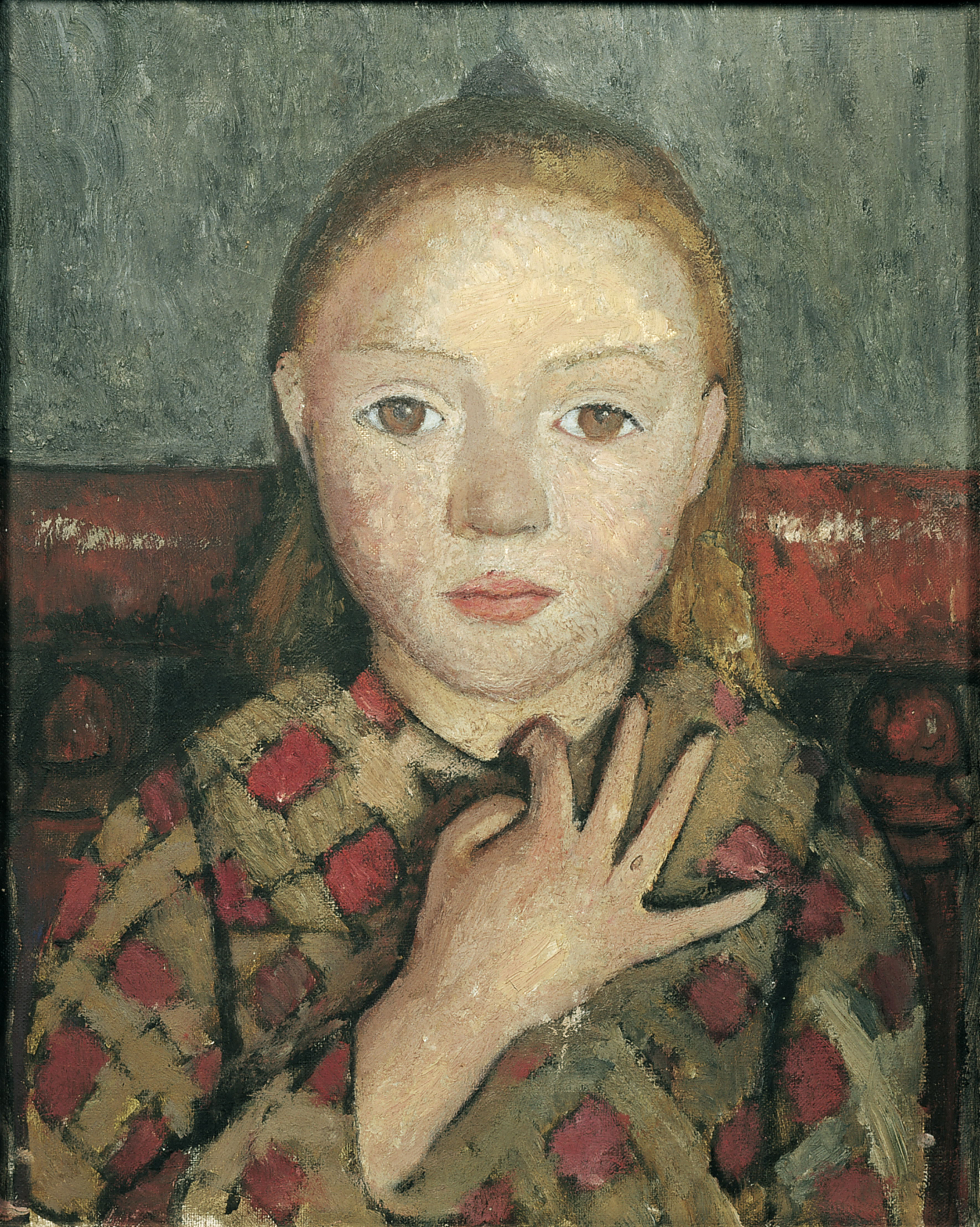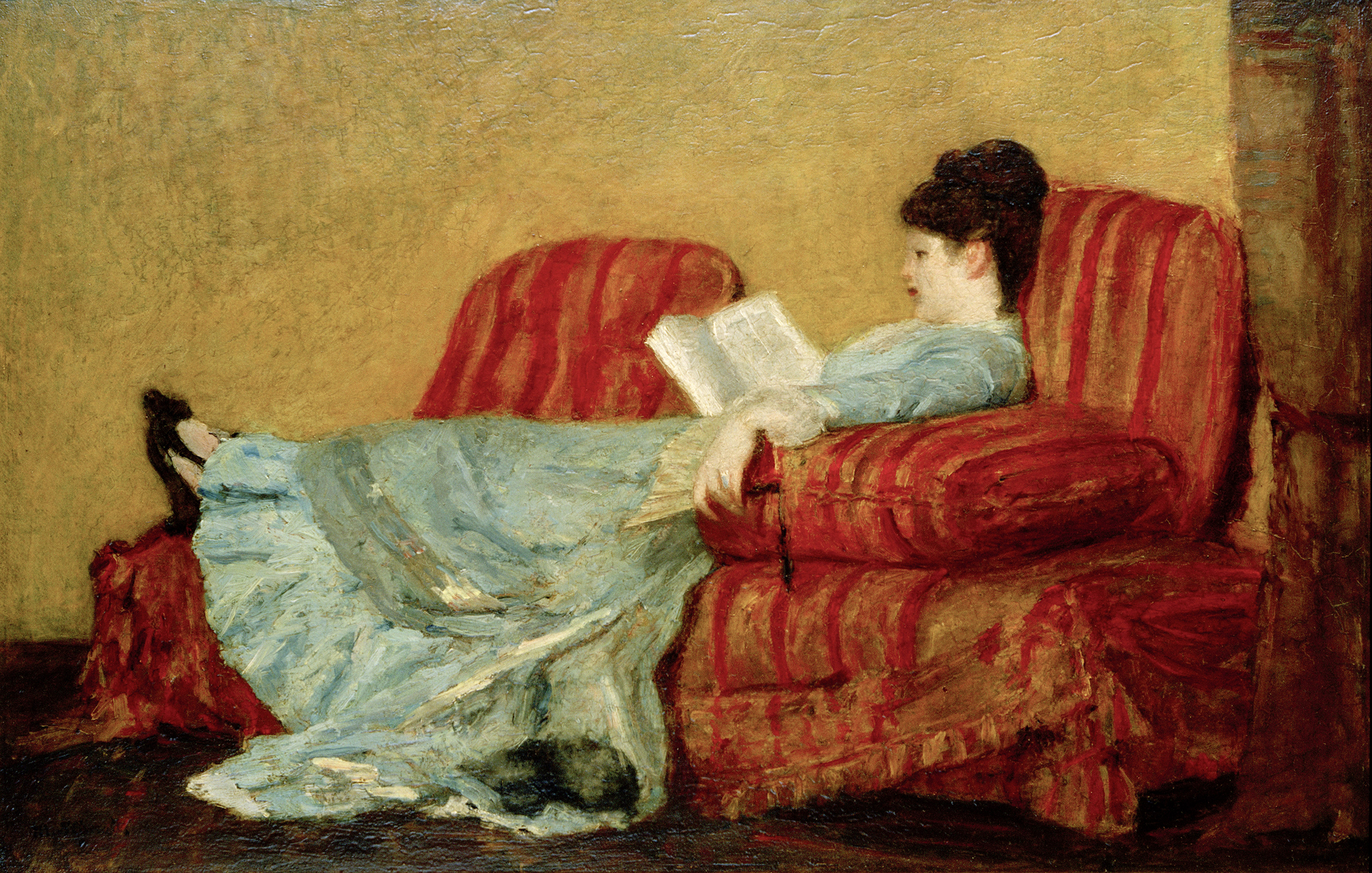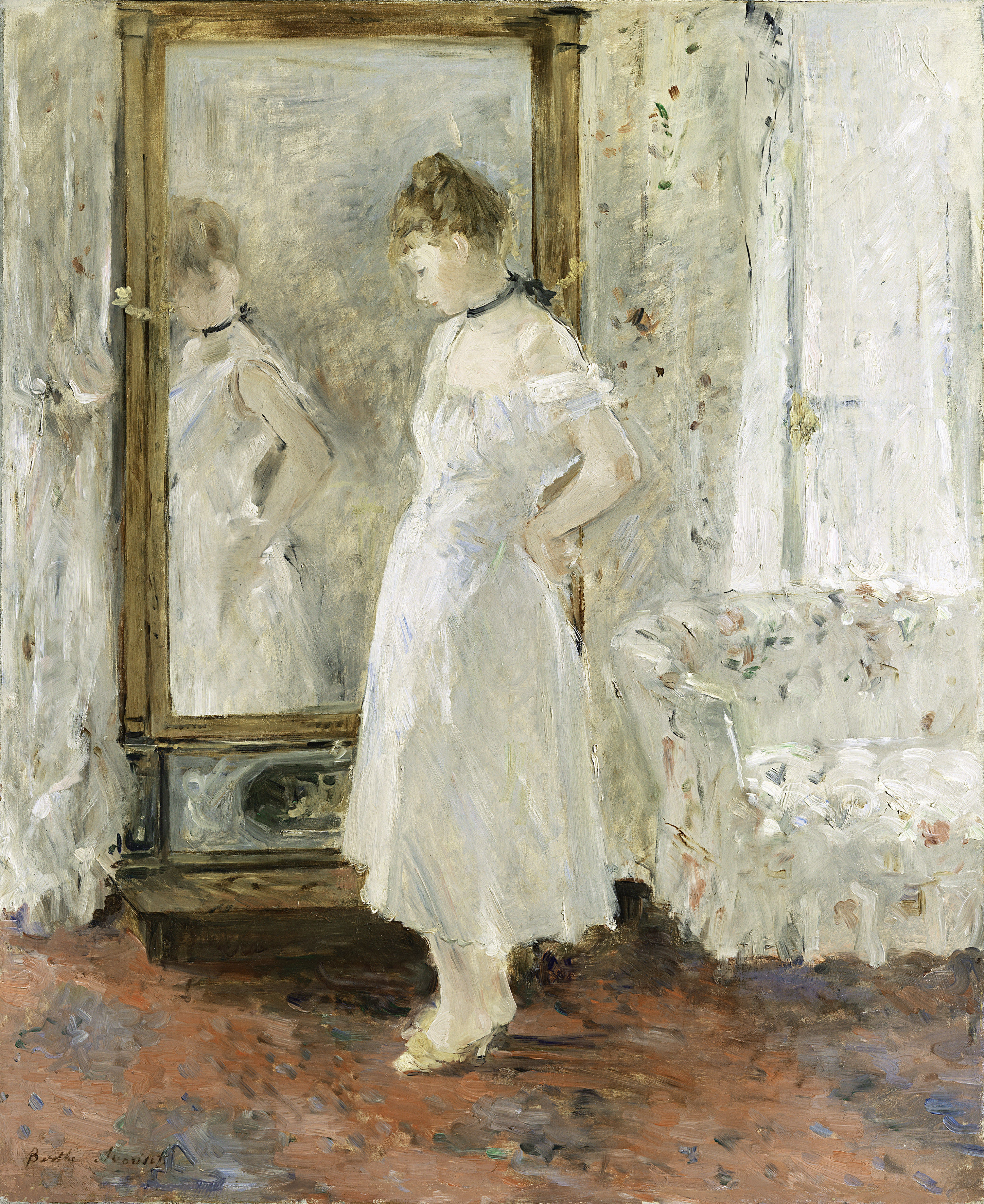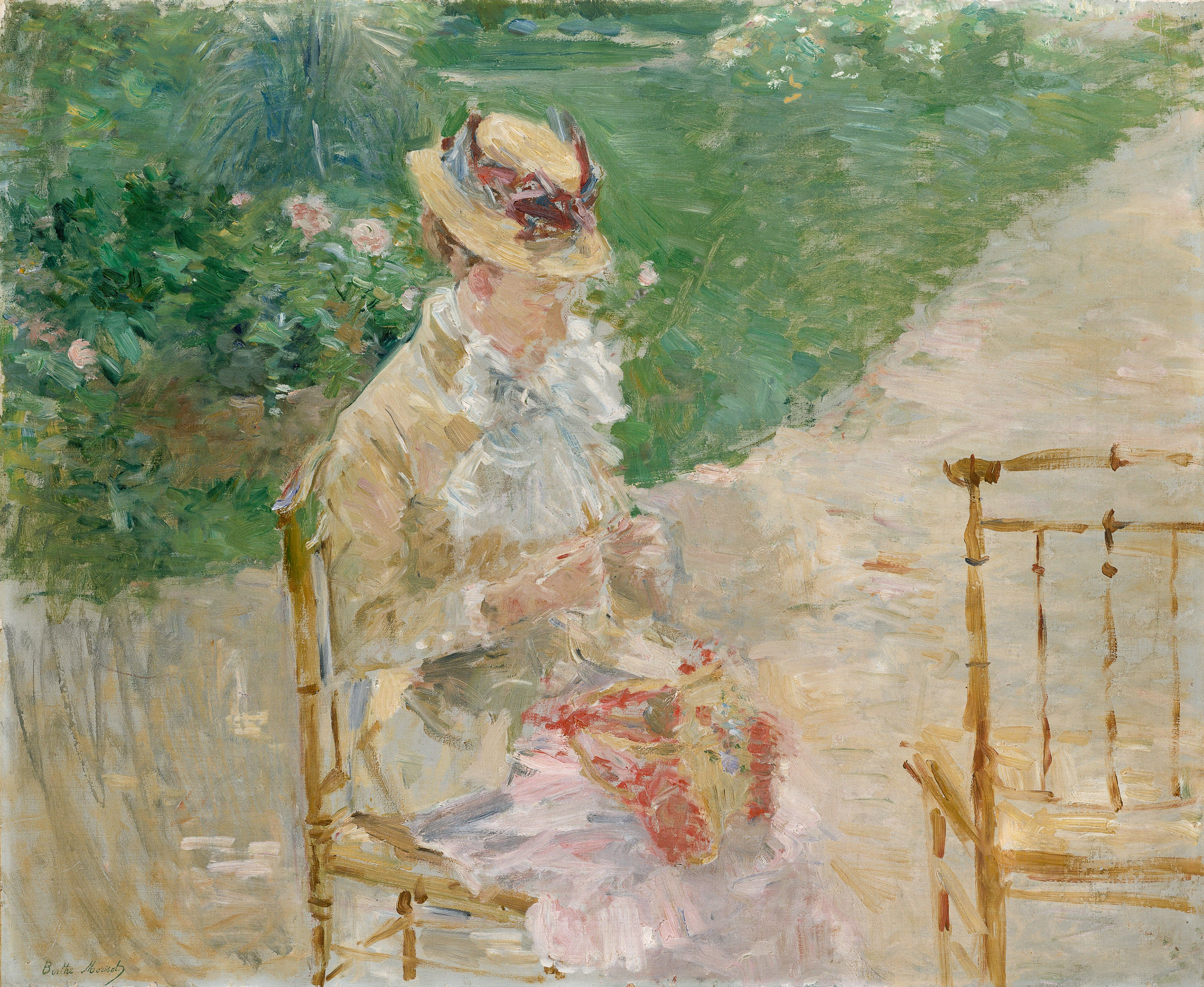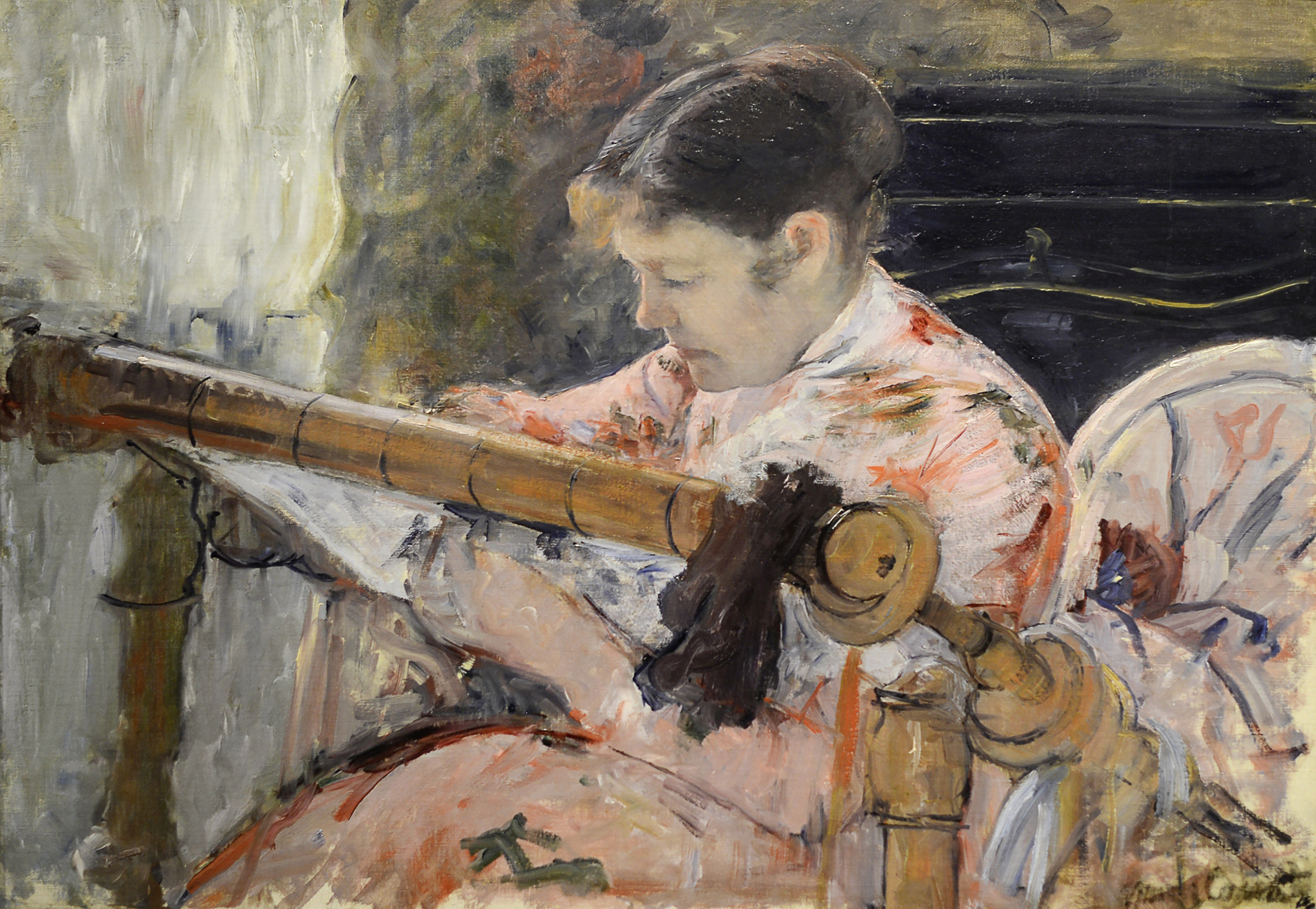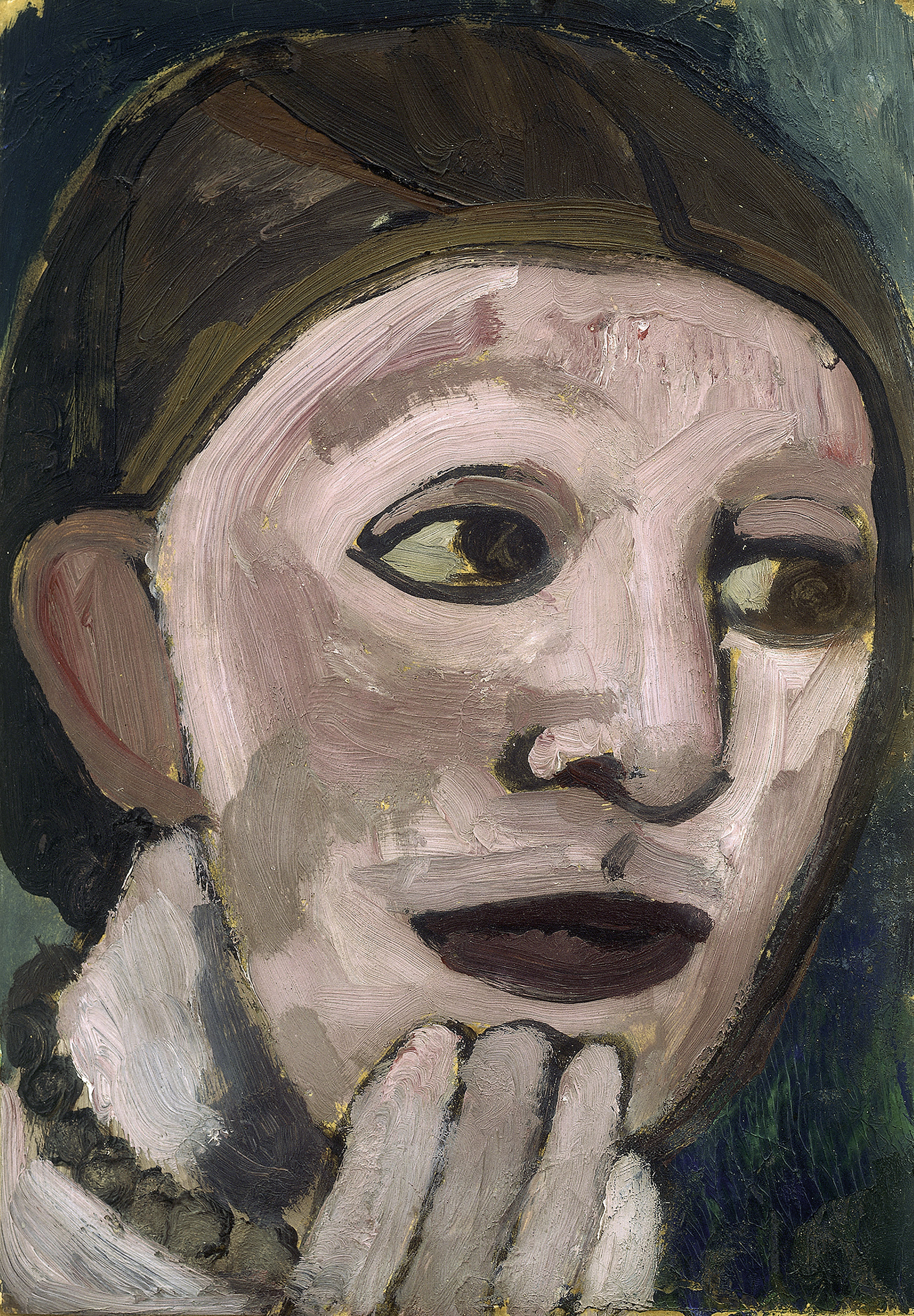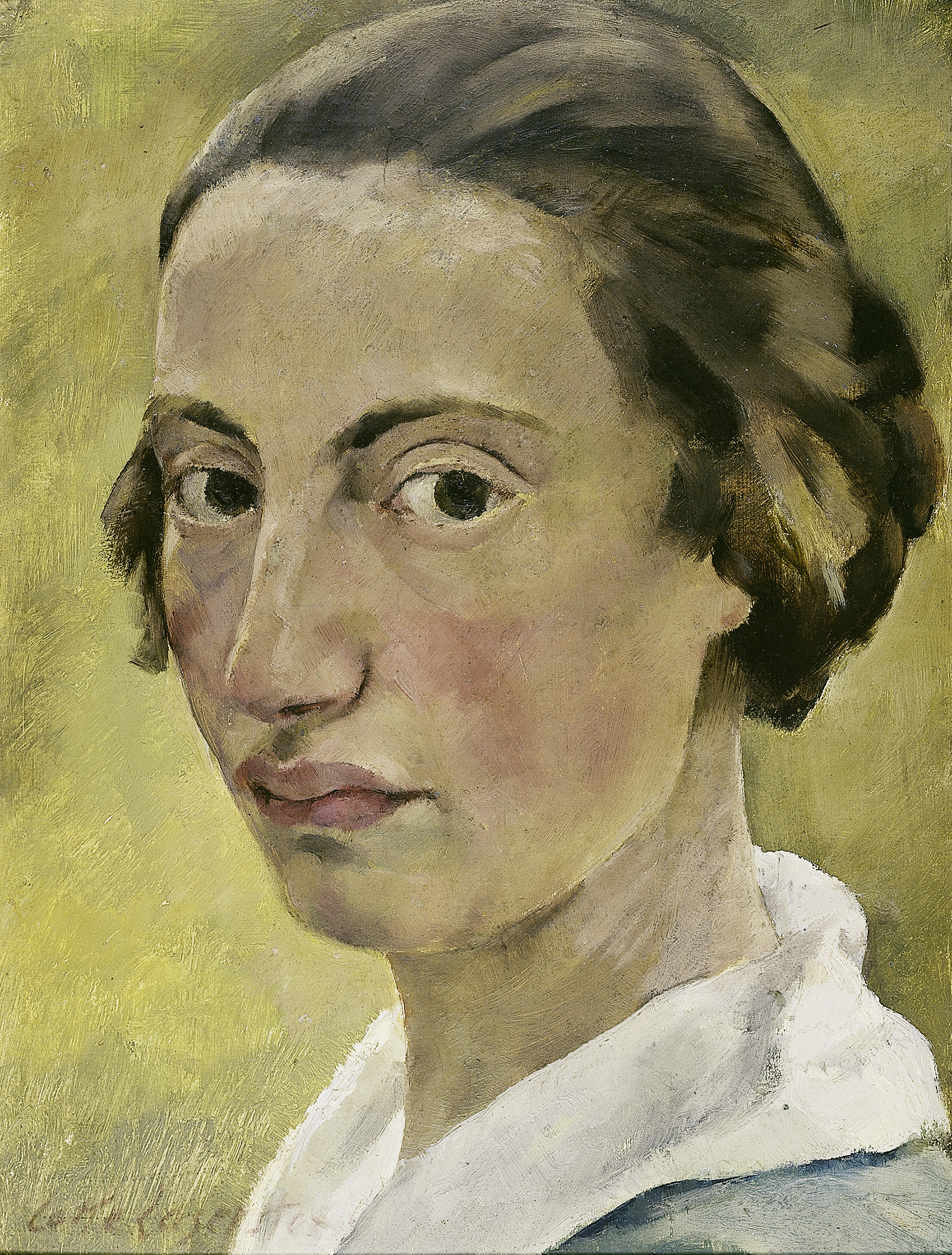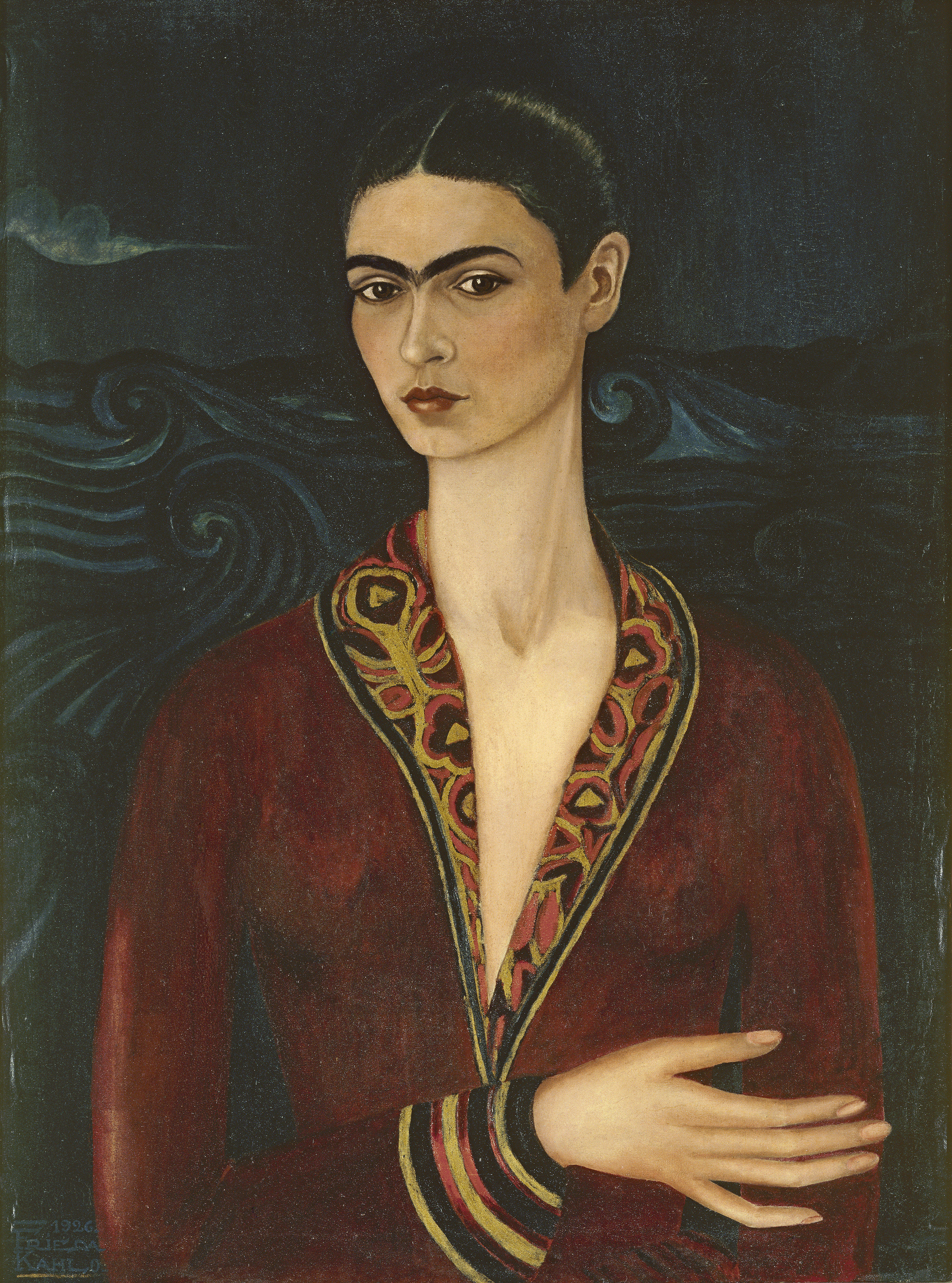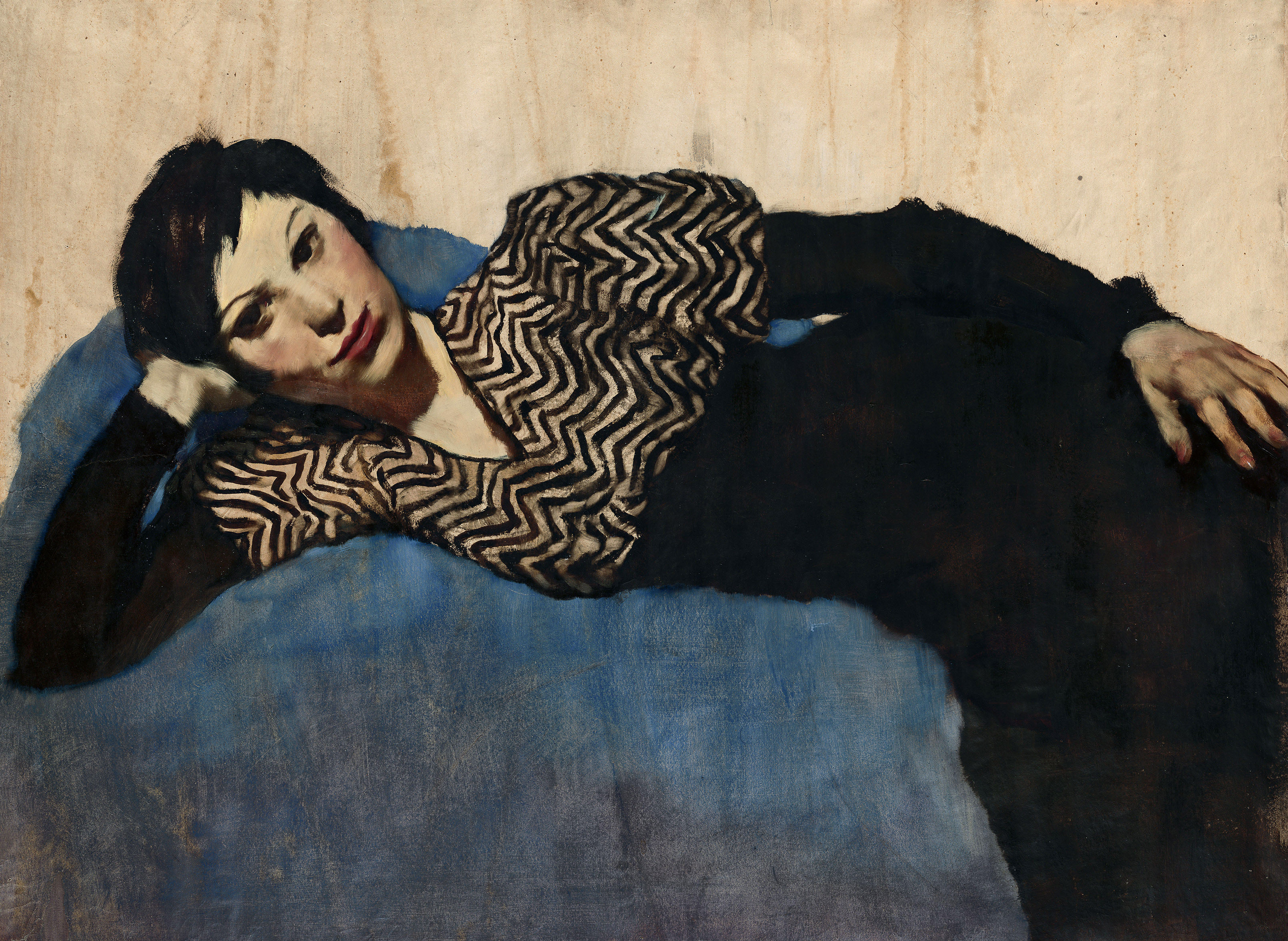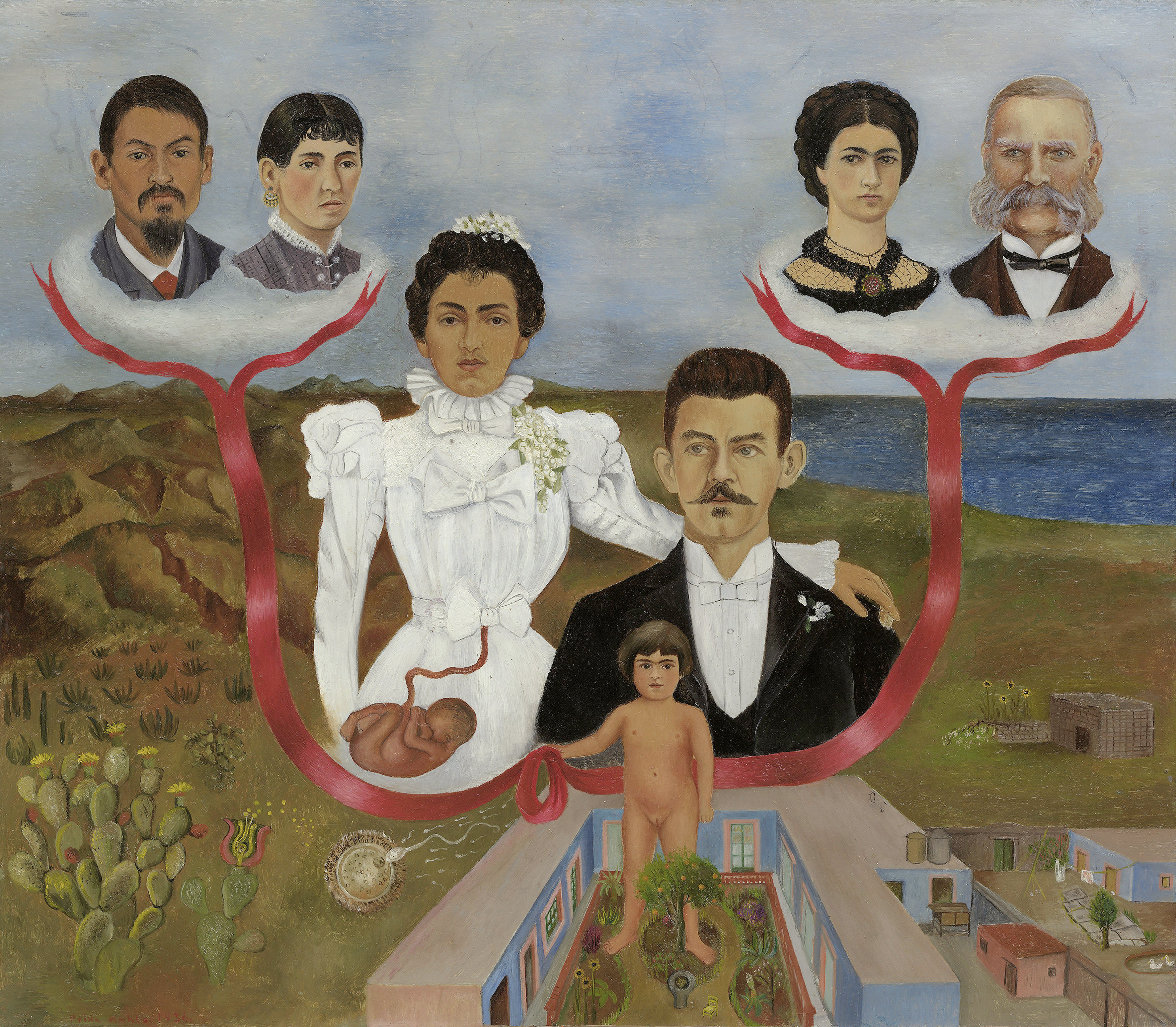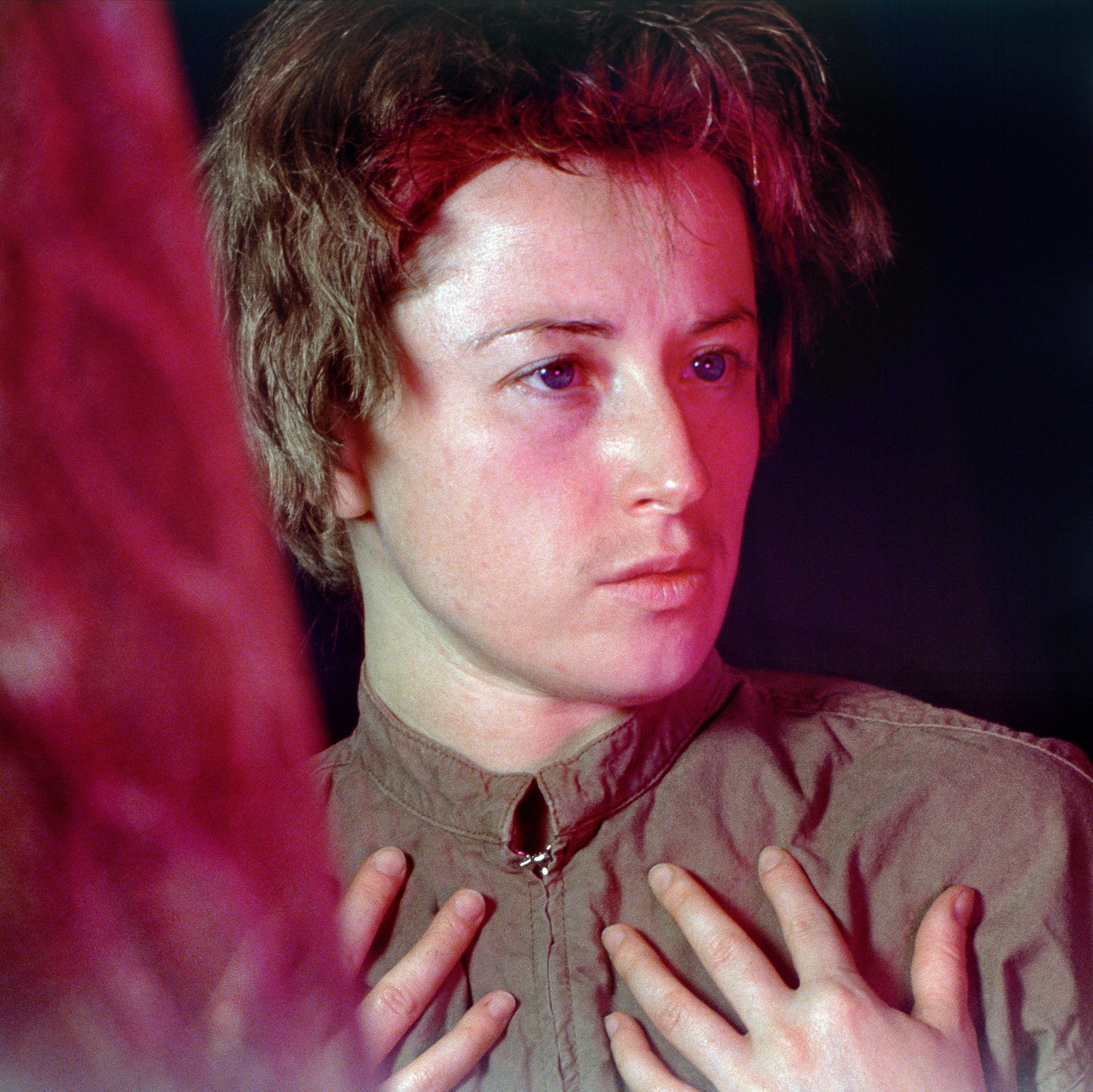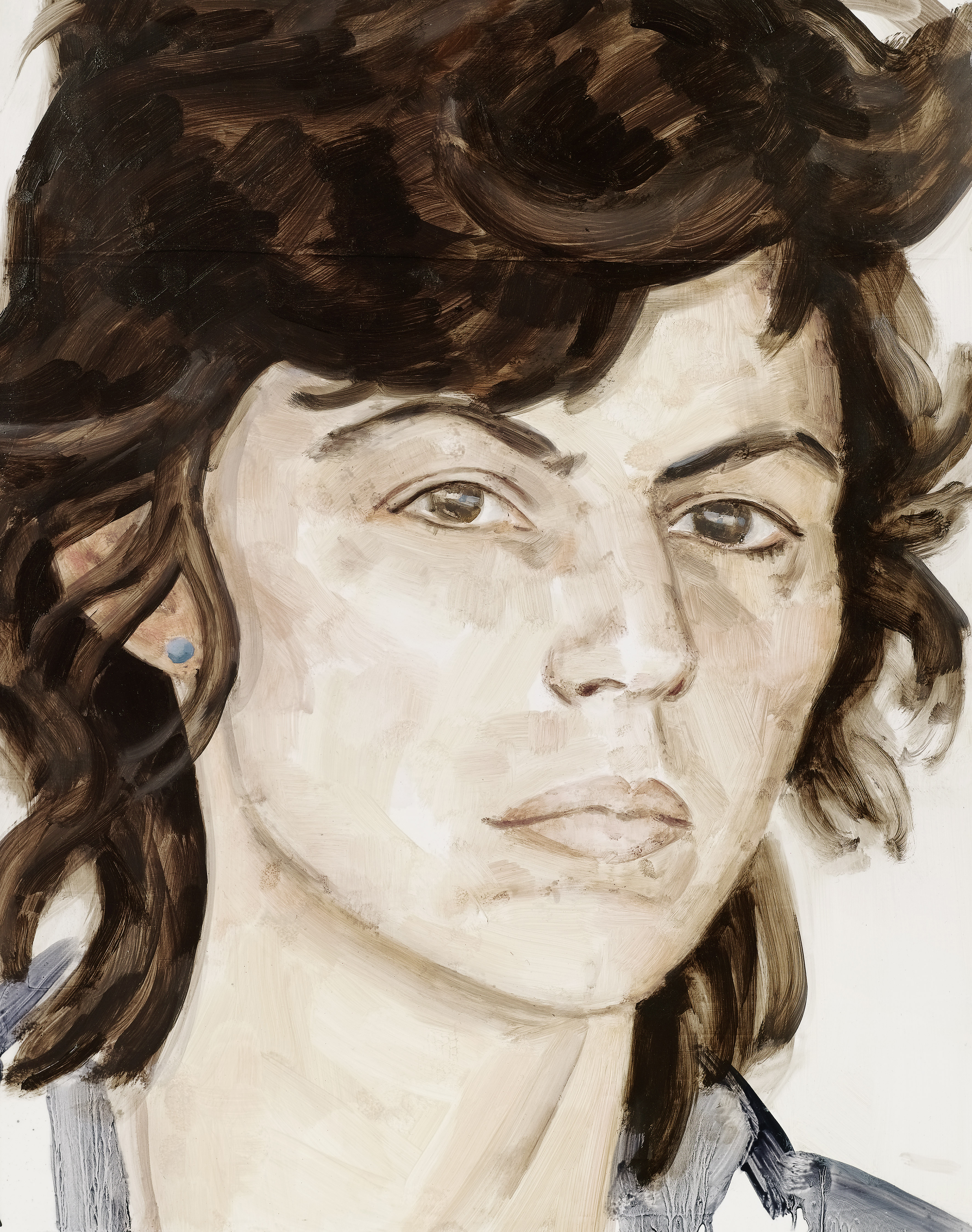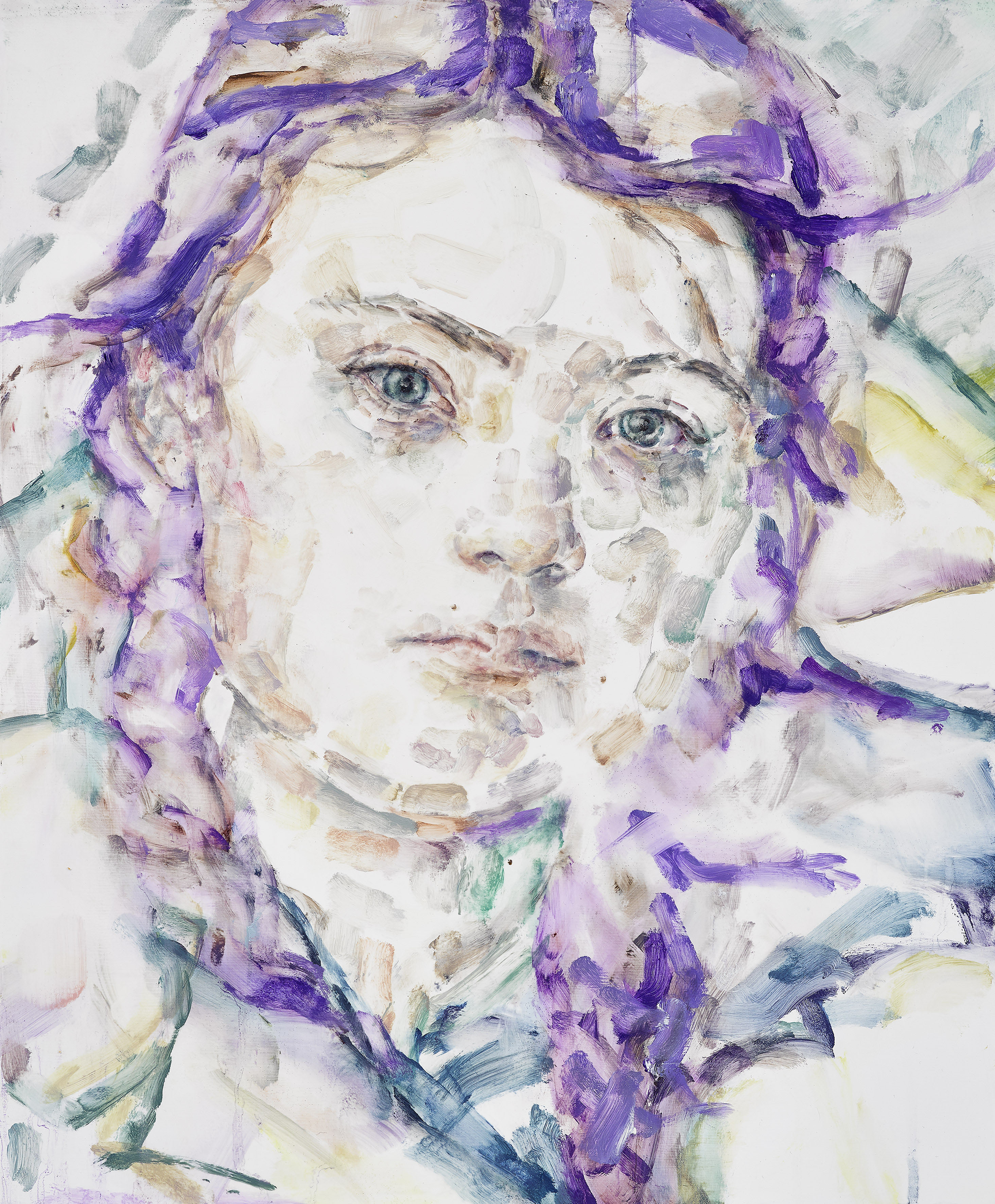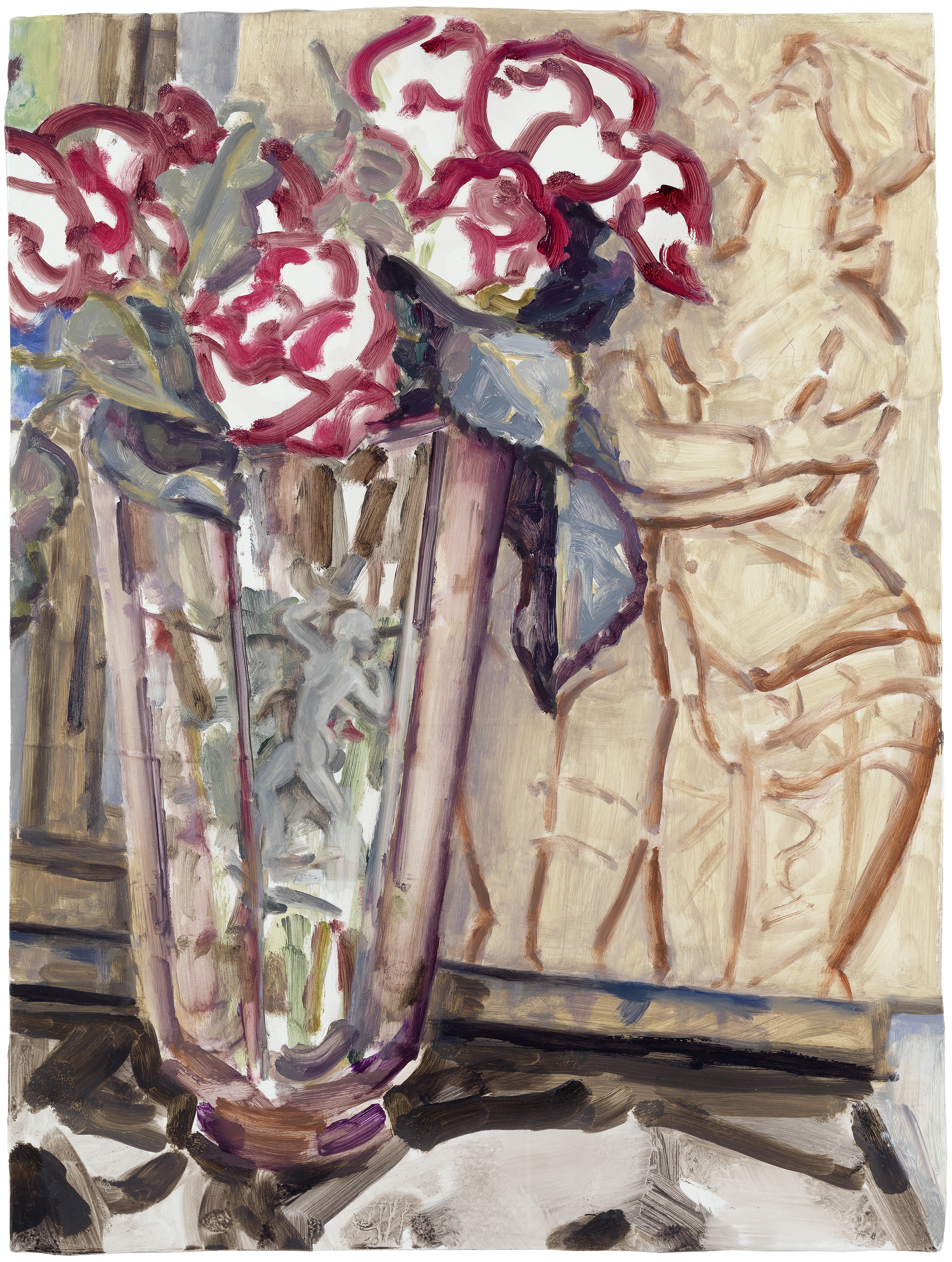Fondation Beyeler, Riehen/Basel
September 19, 2021–January 2, 2022
“CLOSE-UP” brings together nine women artists whose work shares a focus on the depiction of the human figure in the form of portraits and self-portraits, and who occupy prominent positions within the history of modern art from 1870 to the present day. The exhibition centres on the artists’ specific perception, on their personal vision of the world that finds expression in the portraits of themselves and others. By juxtaposing these artists, it becomes possible to understand how the artists’ view of their subject shifts between the second half of the 19th century and today, and to appreciate what is reflected in that view and what makes it significant.
The exhibition considers a period at the beginning of which it first became possible for women artists in Europe and America to become professionally active on a broad basis. It was also a time in which the notion of the portrait underwent a profound shift, along with a radical reassessment of the notion of the individual. Just as Impressionism ushered in a transformation of classical portraiture, so the beginning of the 20th century saw artists experiment with altogether relinquishing any notion of likeness. Subsequently, the portrait turned into a form of expression in which to explore new conceptions of subjectivity and new possibilities of representation. The artists featured in the exhibition provide an exemplary illustration of this trajectory. While the exhibition does not intend to provide a history of portraiture since the inception of modernity, each of the artists’ bodies of work presents a specific form of portraiture that is rooted in and arises from their respective time.
The exhibition opens with Berthe Morisot (1841–1895) and Mary Cassatt (1844–1926). The two artists helped shape Impressionism and became important role models for subsequent generations of women painters.
The works of Paula Modersohn-Becker (1876–1907) featured in the exhibition were created between 1900 and 1907, the years of her exceptionally intense and promising early work, which came to an abrupt end with the artist’s death in childbirth in November 1907. Thirty years stand between her and Morisot and Cassatt, and artistically speaking Modersohn-Becker occupies a different position, figuring among the first who may be considered pioneers of modernism.
With Lotte Laserstein (1898–1993), the exhibition shifts its focus from Paris to 1920s Berlin. Her portraits feature types of everyday modern life, in particular the “New Woman” whose image was then propagated in photography, magazines and film.
The work of Frida Kahlo (1907–1954) probably presents the most complex form of the portrait, and more particularly the self-portrait, in the exhibition. Kahlo’s self-portraits are unmistakably representations of the artist, yet they do not attempt to capture the real self. Rather, they are highly constructed self-portraits, but no less authentic for being so.
Though belonging to the same generation as Lotte Laserstein and the slightly younger Frida Kahlo, Alice Neel (1900–1984) represents a completely different position both historically and artistically. Unlike many of her American fellow artists, Neel did not choose the path of abstraction and remained true to figuration. Nor did she distance herself from her models or take an ironic view of them. She created realistic portraits, painted from live models or from memory, aiming to capture the character of an individual.
A new section of the exhibition begins with Marlene Dumas (*1953), followed by Cindy Sherman (*1954) and Elizabeth Peyton (*1965), as contemporary portraiture takes centre stage with three very different positions. Common to all three artists is the fact that their perception and experience of reality are shaped and influenced by the mass media and the power of its imagery. Each of their approaches to portraiture expresses this in a different way.
With around 100 loans from international museums and private collections in Europe, the United States and Mexico, the exhibition provides unexpected and unique perspectives on the history of portraiture and the artists’ journeys.
The exhibition catalogue is published in German and in English by Hatje Cantz Verlag, Berlin. On 342 pages, it features essays on each of the artists by Tere Arcq and Hilda Trujillo, Tamar Garb, Peter Geimer, Donatien Grau, Anna-Carola Krausse, Sylvie Patry, Uwe M. Schneede, Jennifer A. Thompson and Theodora Vischer.
Berthe Morisot Jeune Femme au Divan (Girl on a Divan), ca. 1885 Oil on canvas, 61 x 50.2 cm Tate, London; Bequeathed by the Hon. Mrs A.E. Pleydell-Bouverie through the Friends of the Tate Gallery 1968 Photo: © Tate
Paula Modersohn-Becker Mädchenbildnis mit gespreizter Hand vor der Brust (Portrait of a Girl with Her Hand Spread across Her Chest), 1905 Oil tempera on canvas, 41 x 33 cm Von der Heydt-Museum Wuppertal Photo: Antje Zeis-Loi, Medienzentrum Wuppertal
Mary Cassatt Young Lady Reading, 1878 Oil on wood, 40.3 x 63.2 cm Collection of Diane B. Wilsey Photo: © 2021. Christie’s Images, London/Scala, Florence
Berthe Morisot La Psyché (The Psyche Mirror ), 1876 Oil on canvas, 65 x 54 cm Museo Nacional Thyssen-Bornemisza, Madrid
Berthe Morisot Jeune femme cousant au jardin (Young Woman Knitting), ca. 1883 Oil on canvas, 50.2 x 60 cm The Metropolitan Museum of Art, New York, Bequest of Miss Adelaide Milton de Groot (1876–1967), 1967 Photo: © 2021. Image copyright The Metropolitan Museum of Art/Art Resource/Scala, Florence
Mary Cassatt Lydia at a Tapestry Frame, ca. 1881 Oil on canvas, 65.1 × 92.4 cm Collection of the Flint Institute of Arts, Flint, Michigan. Gift of The Whiting Foundation, 1967
Mary Cassatt Portrait of Alexander J. Cassatt and His Son, Robert Kelso Cassatt, 1884 Oil on canvas, 100.3 x 81.3 cm Philadelphia Museum of Art; Purchased with the W.P. Wilstach Fund and with funds contributed by Mrs. William Coxe Wright, 1959
Paula Modersohn-Becker Selbstbildnis nach halbrechts, die Hand am Kinn (Self-Portrait Turned to the Right with Hand at Chin), Summer 1906 Oil tempera on paper on cardboard, 27 x 18.7 cm Paula-Modersohn-Becker-Stiftung, Bremen; Loan from a private collection Photo: © Paula-Modersohn-BeckerStiftung, Bremen
Paula Modersohn-Becker Selbstbildnis als Halbakt mit Bernsteinkette II Self-Portrait (Semi-Nude with Amber Necklace II), Summer 1906 Oil tempera on canvas, 61 x 50 cm Kunstmuseum Basel, acquired with a special loan from the Basel government 1939 Photo: Martin P. Bühler
Lotte Laserstein Selbstporträt mit weissem Kragen (Self-Portrait with White Collar), ca. 1923 Oil on cardboard, 32 x 24 cm Private collection, Germany © 2021, ProLitteris, Zurich Photo: © Lotte-Laserstein-Archiv Krausse, Berlin / Dietmar Katz, Berlin
Frida Kahlo Autorretrato con traje de terciopelo (Self-Portrait in a Velvet Dress), 1926 Oil on canvas, 79.7 x 60 cm Private collection © Banco de México Diego Rivera & Frida Kahlo Museums Trust, México D.F. / 2021, ProLitteris, Zurich Photo: © akg-images
Alice Neel Hartley on the Rocking Horse, 1943 Oil on canvas, 76.4 x 86.4 cm Private collection © The Estate of Alice Neel
Lotte Laserstein Ich und mein Modell (I and My Model), 1929–30 Oil on canvas, 49.5 x 69.5 cm Private family collection © 2021, ProLitteris, Zurich
Lotte Laserstein Liegendes Mädchen auf Blau (Girl Lying on Blue), ca. 1931 Oil on paper, 69 × 93 cm Private collection, Germany, Courtesy DAS VERBORGENE MUSEUM © 2021, ProLitteris, Zurich Photo: Anja Elisabeth Witte
Frida Kahlo Autorretrato: El marco (Self-Portrait: The Frame), 1938 Oil on aluminium, fixed under glass and painted wood, 28.5 x 20.7 cm; framed: 32.2 x 24.4. cm Centre Pompidou - Musée national d’art moderne - Centre de création industrielle, Paris © Banco de México Diego Rivera & Frida Kahlo Museums Trust, México D.F./ 2021, ProLitteris, Zurich Photo © Centre Pompidou, MNAM-CCI, Dist. RMN-Grand Palais / image Centre Pompidou, MNAM-CCI
Frida Kahlo Mis abuelos, mis padres, y yo (árbol genealógico) / My Grandparents, My Parents, and I (Family Tree), 1936 Oil and tempera on zinc, 30.7 x 34.5 cm Museum of Modern Art, New York. Gift of Allan Roos, M.D., and B. Mathieu Roos, 1976 © Banco de México Diego Rivera & Frida Kahlo Museums Trust, México D.F. / 2021, ProLitteris, Zurich Photo: © 2021. The Museum of Modern Art, New York/Scala, Florence
Alice Neel Harold Cruse, ca. 1950 Oil on canvas, 78.7 x 55.9 cm Private collection © The Estate of Alice Neel Courtesy The Estate of Alice Neel and David Zwirner
Cindy Sherman Untitled, 1982 Chromogenic color print, 91.4 x 91.4 cm Louisiana Museum of Modern Art, Humlebaek Denkmark. Long-term loan: Museumsfonden af 7. December 1966 © 2021 Cindy Sherman
Elizabeth Peyton Isa Genzken, 1980, 2010 Oil on board, 35.6 x 27.9 cm Private collection © Elizabeth Peyton, Courtesy the artist and Gladstone Gallery, New York and Brussels
Cindy Sherman Untitled, 2008 Chromogenic color print, 148.6 x 146.7 cm Collection of Carla Emil & Rich Silverstein © 2021 Cindy Sherman
Elizabeth Peyton Greta, 2019 Oil on board, 43.2 x 35.6 x 2.9 cm Peter Morton, Los Angeles © Elizabeth Peyton, Courtesy the artist and Gladstone Gallery, New York and Brussels
Elizabeth Peyton Two Greek Girls + Peonies (Berlin), 2011–2012 Oil on panel, 40.6 x 30.5 cm Private collection © Elizabeth Peyton, Courtesy the artist and Gladstone Gallery, New York and Brussels
Biographies
Berthe Morisot (1841 in Bourges – 1895 in Paris) Berthe Morisot stands at the beginning of the exhibition together with Mary Cassatt, two artists who became important role models for subsequent generations of women painters. Morisot grew up in affluent circumstances in Paris, where her family had settled in 1851. The private lessons in drawing and painting that she and her sister received as part of their education were only one step on the way to art as a profession. The weekly evening parties hosted by their mother, which were regularly attended by artists, created the framework in which the Morisot sisters were able to make acquaintances and establish contacts, including with Édouard Manet and Edgar Degas. The latter belonged to the circle of young painters who opposed the academism of the Salon de Paris and organised the Impressionist exhibitions as an alternative exhibition opportunity. Morisot took part in the first of these exhibitions in 1874. With a few important exceptions, the works by Morisot selected for our exhibition were created between 1869 and 1885, the period in which her painting reached its full development. The iconography of leisure, newly formulated in Impressionism, takes place in Morisot’s paintings in the domestic sphere, those spaces that were open to women of her background. The models come from her environment, are often members of the family, female servants and young women from her circle of acquaintances. The paintings reflect the artist’s world and at the same time bring modern urban life into the domestic sphere. Far from conventional, anecdotal depictions of genre, Morisot creates modern portraits and representations of figures in the Impressionist sense. A decisive contribution to this is made by the Impressionist style of painting, which she pushed further, increasingly encompassing the entire picture surface and making space secondary in favour of a total image of figure and background.
]Mary Cassatt (1844 in Allegheny City, Pennsylvania – 1926 in Le Mesnil-Théribus) Mary Cassatt was the only American of French Impressionism. When Cassatt settled in Paris in 1874, she was a trained artist who had already studied art for over ten years in the USA and in various cities in Europe, including Paris. She possessed a progressive self-understanding of women’s social position that was not uncommon in America among prominent women of her generation, and which benefited her own path. In Paris, Cassatt exhibited at the Salon, where Edgar Degas saw her work and held her art in high regard ever since. Degas invited Cassatt in 1877 – shortly after she had been rejected by the Salon – to join the circle of Impressionists and exhibit with them. This is also how she met Berthe Morisot, who was almost her age, and with whom she became friends for many years. The works by Cassatt selected for the exhibition were created between 1877–78 and 1890, the period in which her painting reached its full development in Paris. The artistic environment of the Impressionists gave her the freedom to take up views and formulations that Impressionism had found to capture modern urban life and to combine them with her own perception, which was shaped by her Franco-American origins and education. Cassatt’s paintings, which were subsequently created, are – with the exception of a few early examples in the public domain – situated in the private and domestic sphere and show people close to her, mostly women: ladies from society, her mother, her sister or her little niece. But what is unusual and new is the way these people are shown. Whatever they are doing – reading, drinking tea, observing, or doing nothing – they appear in the picture as subjects of modern life, as can hardly be seen in any other Impressionist artist.
Paula Modersohn-Becker (1876 in Dresden – 1907 in Worpswede) The works by Paula Modersohn-Becker selected for the exhibition were created between 1900 and 1907. These are the years of the immensely intense and artistically fruitful early work after her first beginnings in the 1890s. These works also represent the artist’s entire oeuvre. Almost thirty years lie between this complex of works and the works of the Impressionists Berthe Morisot and Mary Cassatt, with whom the exhibition begins. Artistically, Modersohn-Becker stands in a completely different place, she is one of the first who can be called a pioneer of modernism. The settings for her life and work in this short decade were both Worpswede, a typical 19th-century artists’ colony separate and independent of the academies’ understanding of art, and the big city of Paris, focal point of the international avant-garde and Modersohn-Becker’s self-chosen place of artistic destiny. The balancing act she sought and forced between the two settings shaped her life and sharpened her artistic quest. Modersohn-Becker painted landscapes, still lifes, and genre-like depictions of figures and portraits. But portraiture is clearly in the foreground; it was the ideal field of research for her quest. It is in the portraits, and especially the self-portraits, that the boldness and radicality of her art is most clearly expressed. The self-portraits and portraits of these years show the sitters without a scenic background. The figures are reduced to the essentials, usually captured entirely or almost frontally and in close-up. They may be familiar, but before the artist’s gaze they recede as individuals. Realistic resemblance and emotion are replaced by a concentration on a few formal qualities that distinguish a face, a figure. This can be seen particularly impressively in the artist’s self-portraits, in which the simplification and formalisation become increasingly clear and decisive.
Lotte Laserstein (1898 in Preussisch Holland – 1993 in Kalmar) The works by Lotte Laserstein selected for the exhibition were created between 1923 and 1933. These are the years of her early work, the artistically decisive years of her creative life, which came to an end with her emigration to Sweden. Twenty years lie between Laserstein and the Paris-oriented Paula ModersohnBecker, whom she follows in the exhibition. Artistically, Laserstein is in a different place. Laserstein is one of the outstanding representatives of a realism that emerged in the 1920s alongside the art of New Objectivity. Her art is characterised by a warm-toned, sensual and meticulously crafted style of painting, which always allows her academic origins and tradition to shine through. The central themes of her work are portraits and depictions of figures. Here Laserstein proves herself to be connected to and committed to the present. The setting for her life and work in these years was the big city of Berlin during the Weimar Republic. This is where the depicted people are situated. The portraits are oriented towards types of modern everyday life as they were to be found in Berlin. Laserstein was particularly interested in the image of the New Woman, as it was also propagated in photography, magazines and film. The idiosyncratic and exciting combination of the resolutely modern, neo-objective view and the slightly melancholic, traditional painting in Laserstein’s portraiture distinguishes the work of these years to a high degree.
Frida Kahlo (1907 in Coyoacán, Mexico City – 1954 in Coyoacán, Mexico City) With the work of Frida Kahlo, probably the most complex form of the portrait, especially the self-portrait, appears in the exhibition. For a long time, the view of Kahlo’s art was blocked by the over-identification of self-portraits with her biography. For some years now, and thanks to the research of newly accessible archival holdings, the complexity of her concept of portraiture has been recognised as an independent and forward-looking artistic achievement. Her dual origins as the daughter of a German father and a Mexican mother, the political discussion in postrevolutionary Mexico in which Kahlo and her husband Diego Rivera took an active part, her occasional proximity to European Surrealism and her strong ties to pre-Columbian culture and folk art – all these are levels of engagement that drove Kahlo’s artistic quest and shaped her pictorial world. On this basis, she developed a concept that is fundamentally different from conventional views of portraiture. The self-portraits are unmistakably representations of the artist – a comparison with the countless photographs taken of her shows this – but they are not portraits that attempt to capture the biographical self. The face is unchanged in all the pictures, beautiful, serious and expressionless. The sitter appears – just as it does in the photographic portraits – as a figure performing a kind of masquerade, surrounded by accessories and set pieces that change over time and define the figure. They are constructed self-portraits and no less authentic for that.
Alice Neel (1900 in Merion Square, Pennsylvania – 1984 in New York) The artistic work of the American Alice Neel spans almost five decades, beginning around 1930 and lasting until around 1980. As a classical portrait painter who was very active during the pre- and post-war periods, she is an exceptional figure in 20th century art. Although belonging to the same generation as Lotte Laserstein and the slightly younger Frida Kahlo, Neel also represents a completely different position within the exhibition, both historically and artistically. Neel’s art is conservative in a certain sense. She remains true to figuration, does not choose the path of abstraction or conceptual art. Nor does she distance herself from her models or adopt an ironic attitude towards them. They are realistic portraits, painted in front of the living model or from memory, and aim to capture the character of an individual. Neel’s artistic approach was influenced early on by the tradition of American Realism or the Ashcan School, which was still in effect in 1921 at the Philadelphia School of Design for Women, where Neel had enrolled at the age of 21. For the painterly realisation, however, there were no models in the tradition for the budding artist. She began to search for her own language and created a stylistic foundation on which she could develop her portraiture. The models reflect Neel’s respective circumstances in life, which for a long time were determined by her lovers and partners, precarious financial circumstances and her situation as a woman and single mother. Neel had lived in New York City since 1932 and the changing places of residence – Greenwich Village and Chelsea, then Spanish Harlem and, from 1962, the Upper West Side – are reflected in the models. They are portraits of people from different social classes and milieus whom she met in the neighbourhood, portraits of acquaintances, friends and family. Seen together, Neel’s portraits provide a view of American society from the 1930s to the 1960s from the perspective of a committed artist.
Marlene Dumas (*1953 in Cape Town) Marlene Dumas is one of the outstanding representatives of contemporary figurative painting. The generation gap to Alice Neel (1900–1984) is enormous, but Dumas was able to experience the late work of this artist as a contemporary. Dumas’s art, however, is based on a fundamentally different conception of portraiture. Dumas was born in Cape Town and grew up on a nearby wine estate. After studying art at the University of Cape Town, she moved from the apartheid state to the Netherlands in 1976. Since then, the artist has lived and worked in Amsterdam. Here, after her arrival, she was able for the first time to see originals of old and new European and American art, which until then she had only known from reproductions. Likewise, the flood of images in the Western media influenced her examination of the perception of images and their painterly realisation. The human figure and the portrait are at the centre of Dumas’s work. Yet Dumas does not paint directly from life. As a starting point for her paintings, drawings and watercolours, the artist uses an extensive picture archive that she has built up over the decades in her studio in Amsterdam. Private family photos, pictures from the press, magazines and film stills, for example, serve her as models. Starting from these photographs, Dumas transforms the image with her painterly gesture into a fascinating, sometimes disturbing and deeply moving picture on canvas or paper. In individual and group portraits, the artist deals with current and timeless themes familiar to all, such as love, death, identity and mourning. She refers to current events as well as to art history and lends new weight to figurative painting with her work. The selection of works for the exhibition was made in close collaboration with the artist.
Cindy Sherman (*1954 in Glen Ridge, New Jersey) Cindy Sherman belongs to a generation that grew up with television. The photographically mediated view of the world and the power of media-mediated images shape her work. Cinema and television, fashion photography, advertising and the Internet are sources of inspiration for her conceptual photography practice. In Cindy Sherman’s art, the portrait takes on a whole new dimension. Since the late 1970s, her work has concentrated on photographic self-portraits in which the identity of the artist herself, however, recedes into the background. Sherman’s portrait series are mainly created in her New York studio. Here she acts in front of and behind the camera as photographer, director, make-up artist and model at the same time. Using clothes, make-up, wigs and props, the artist transforms herself into a wide variety of fictional characters. She stages herself as a Hollywood actress, model, housewife, as well as a vamp or clown. She places her figures in precisely designed settings, also with the help of digital image technologies for the past several years. It is themes such as beauty, age, gender and identity that Sherman explores in a targeted confrontation with conventions of representation. In this way, she questions and parodies the construction of female identity, social role models, stereotypes and behaviour in an exaggerated form. For over forty years, her photographs have revealed an unsparing and critical view of contemporary society. The selection of works for the exhibition was made in collaboration with the artist.
Elizabeth Peyton (*1965 in Danbury, Connecticut) Elizabeth Peyton studied at the School of Visual Arts in Manhattan in the heart of New York, the art metropolis, from 1984–1987, where she still (mainly) lives and works today. At the centre of her work, which also includes still lifes and landscapes, is the portrait – a genre that Peyton gave new validity to in the late 20th century with her oil paintings, watercolours, drawings and prints. Already in the early 1990s, when talk of the end of painting was omnipresent, the young artist attracted attention in New York with her small-format, intimate portraits. Peyton paints friends and lovers from her personal environment as well as historical heroic figures and celebrities from different times and contexts. They are all personalities whose creativity and lives inspire and fascinate her: from artists, musicians, actors, poets and activists to athletes and politicians. Photographs, images from the mass media as well as literature, music, her own memories and, for some time now, work on living models, form the starting point for her painterly exploration of the people she portrays. However, Peyton does not paint them strictly in likeness. Her view of the subjects is subjective, empathetic and appears familiar. In her portraits, the faces appear youthful, often sunken, full of potential at the beginning of their careers. Beauty, love and individuality are themes in her paintings, with which the artist is able to capture the spirit of the times. The selection of works for the exhibition was made in collaboration with the artist. Associated Events
https://www.fondationbeyeler.ch/en/media/press-images


